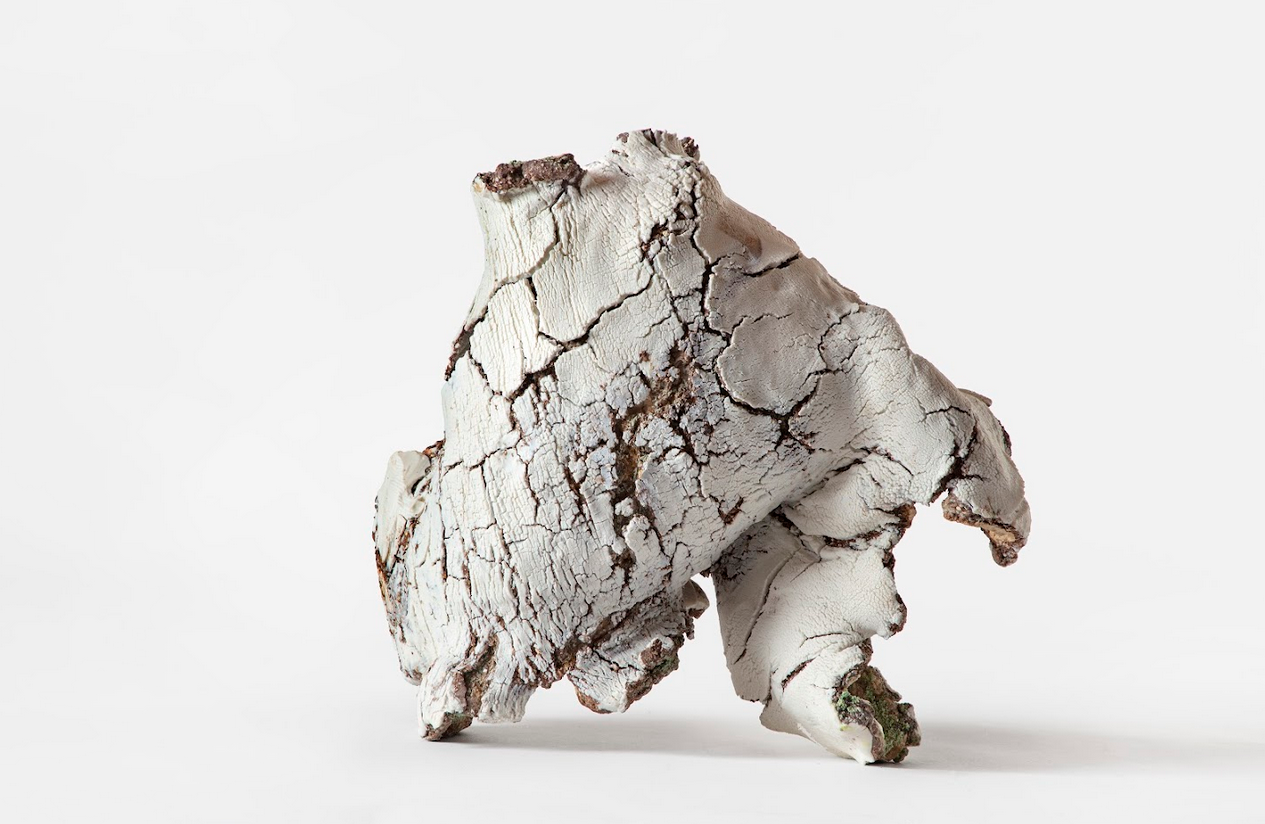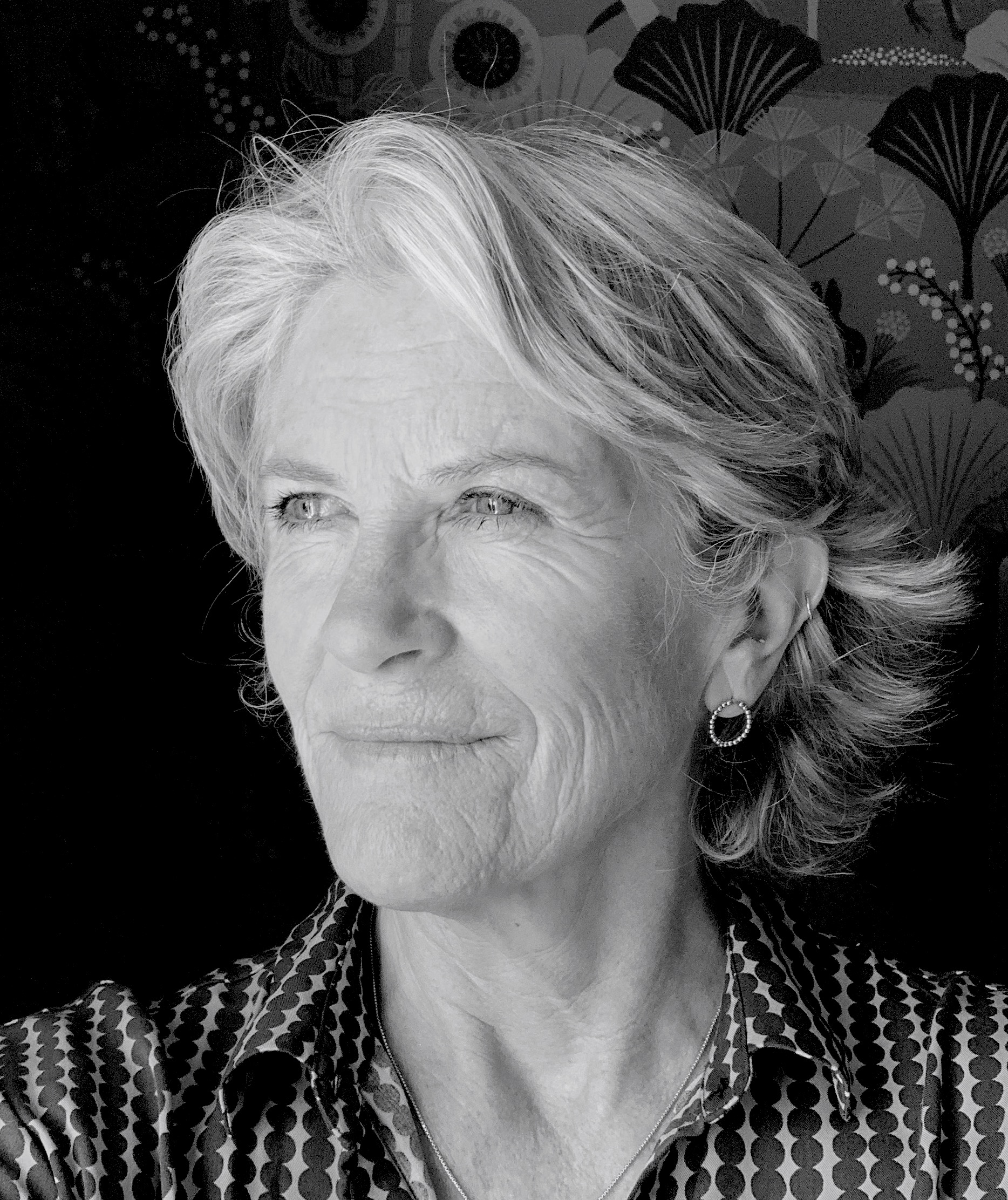
Shape Shifting, porcelain, 50 x 52 x 22 cm, 2020
Interview by Blaire Dessent
TL Magazine, Landscape’ Autumn–Winter 2021
TLmag: While your work deals with ecological concerns of the planet, there is a particular connection with the sea and coastline. Where does your interest in this come from?
Harriet Hellman: I have always been drawn to the sea and coast, finding it a rich source of inspiration. My connection to the elements embeds itself in my making, both physically and emotionally. I am particularly drawn to wild coastlines, such as the Atlantic coast of North Devon where the ceaseless cycle of the natural elements and the engagement of time on the landscape, creates a visceral response in me which is both immediate and meditative.
I find clay to be the perfect medium to express my ideas, using the tide and the cyclical movement of time as a convergence of thought and action. I am not looking for answers but enjoy the freedom and spontaneity of the journey, exploring hunches, experimenting with form and responding intuitively to the atmosphere and conditions of the moment. I would love to live on the coast but my family and work are in London, so I make sure I visit often, taking a car-full of clay and art materials and my camera, sometimes digging wild clay from the beach to bring back to the studio.
The shifting tidal seascapes and the environmental impact of erosion and tidal destruction are all too evident on the south coast of the UK. Tidal barriers have been swept away and the coastline is constantly changing, serving to remind me of the power of nature and our powerlessness to control it. My work reflects my thinking around this as I let go of my unfired ceramics into the oncoming tide, surrendering it to the sea. The process of filming, painting, sculpting, collecting, interacting with the inter-tidal zone and documenting eroded coastal spaces, creates a visceral response in me, celebrating impermanence and imperfection.
I am striving to capture place, space and time and the energy of the moment. Creating, intimate, ephemeral narratives with clay on the coast. This deliberate communing with nature, means letting go, and hoping for unexpected and transformed, ‘gifts from the sea’. Ceramic residues are fired , completing this alchemical exchange.

Tipping Point, stoneware, porcelain, wood fired, 23 x 12 x 65 cm, 2020
TLmag: You started making ceramics once you had already begun a separate career path. When and how did you get started working in ceramic? Were you doing something else artistic or was this a big shift?
H.H.: I received a BA in Fine Art Sculpture and then followed a career as a prop maker and Art Director in the film and TV industry both here and abroad. I loved the work, but the hours were long and once I had a young family I was not seeing my children enough. A friend suggested I take an evening class in pottery, so I enrolled and was immediately hooked. I reduced my working hours and undertook a part time HND in Ceramics at my local Higher Education College, then decided to rent a studio and continue Ceramics in a full-time capacity. My dream was to study an MA at the Royal College of Art, so I was delighted to gain a place to study there in 2018, this experience gave me the confidence to consider myself a professional Ceramic Sculptor.
TLmag: As you started going further with clay, was it then when you saw a link to landscapes and the sea or were you already looking for the right medium to convey ideas and concepts you had wanted to explore?
H.H.: I find the elements of water, earth, air and fire in ceramics, and the transformative power that these afford exciting and challenging. Clay is a material of change from one state to another and this gives me the opportunity to facilitate transformation, while reflecting on the balance and fragility of the geological landscape. I see clay as the conduit between myself and the natural world through the process of layering, tearing and building.
The concept of letting go of the outcome and surrendering it to the elements was a response to seeing the effect of coastal erosion on the geology of the shoreline and my belief that everything is connected. Not only is clay a particularly suitable material to express those concerns, being of the earth, but the final fired form of the ceramic sculptures evoke geological formations. The deep history of the land feeds directly into the work it inspires. The title of ‘Anthropocene’ points to my concern for ecological fragility, which is powerfully present and concerning in coastal erosion and rising sea levels.

Perspectives of Time, stoneware, porcelain, 38 x 40 x 20 cm, 2020
TLmag: Would you talk about your process? It’s incredible how each piece seems as if it was peeled away by time and nature so organically, the surfaces so textured.
H.H.: I layer many different clays together in the studio, bringing to mind the layers of geological strata in the landscape. These layers are eroded and revealed when the work is left exposed on the shore or when the work is torn, scarred and peeled back in the studio. The pebbles, sand and seaweed imprint themselves into the work, which is then fired, embedding into the surface layer. Tearing up the layers of clay ignites an emotional and physical connection in me, embedding memories of the coast into the form and surface which is worn, torn and scarred. I multi fire and add layers of glaze until I am satisfied with the surface texture and colour, and intuitively know that the work is finished.
TLmag: You recently had a residency in Denmark. How was this experience on your work? You developed a new way of firing?
H.H.: My experience at Guldagergaard International Ceramic research centre in Denmark was very positive. I was able finish the work I had been doing on my MA in London, which had been suspended due the pandemic in March 2020. The studio was open 24hours a day and I was able to work with no distractions in a supportive environment with other International artists. I was also introduced to wood firing and soda firing, which were new for me and I found it really suited my work. I have continued with this method of firing whenever I get the opportunity.
Recently I sailed around the South Coast of the UK with Sail Britain as an artist-in-residence, looking at the marine environment from diverse perspectives. A cross disciplinary crew from creative and scientific back grounds took part, studying environmental issues such as marine aquaculture, plastic pollution , climate change, and eroding coastlines. Highlighting the cultural importance of our relationship with the sea and the connection between ecological issues and society. This experience was invaluable to my practise and I hope to continue exploring opportunities to broaden my understanding of the natural world in the
future.

Uncertain Rhythm, stoneware, porcelain, 24 x 30 x 12 cm, 2020
TLmag: How do you explore, as it says on your website, ‘human’ time vs ‘deep’ time, in your work? What does this mean exactly?
H.H.: Scales of time are most evident to me when I am at the coast, when considering the ecological fragility of the ocean and the geology of the coastline. The contrast between millennial geological timescales and ephemeral human timescales, reflecting on the micro and macro is particularly present when I am working and responding to the coastal landscape. Considering the Anthropocene, the current geological age where human impact has been the dominant influence on climate and the environment makes me consider the scale of human time versus that of deep time. Recognizing our interconnectedness to the earth and the balance and fragility of our place within it is evident in my making, accepting transience and imperfection. Letting go, surrendering and appreciating the moment, stimulates my thoughts and heightens my awareness, opening new possibilities and directions in my work.
This connection to the coastal environment is what drives my practice and I feel it most when experiencing the rawness of the Atlantic coast.
London based ceramic artist Harriet Hellman is deeply inspired and influenced by wild coastlines, tides, erosion and the sea. She creates layered sculptural ceramic objects that feel as if they’ve been stripped by time and the natural elements, which in some cases they have as she often immerses her unfired pieces into the tides and films the experience of its effects on the object. Curved forms that suggest waves or shells, specks of sand and minerals compacted within cracked white glaze, flecks of colour or charred surfaces, the work seems to be influx, as if it was still on a journey within the sea and its current state is only momentary, an unexpected treasure discovered with delight yet holding secrets to harsher realities of the Anthropocene.

Hellman was shortlisted for the Sustainability First prize in 2021.
harriethellman.co.uk
@harriet_ceramics